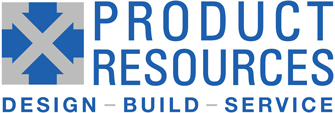To determine if the product meets all the requirements to ship, there must be a procedure to test for conformance.
The breadth of the testing depends on product design requirements and the risks associated with product performance.
Test procedures follow a general format to allow for the proper configuration of the product and the collection of the data in a report.
The basic Test Procedure format is:
- Equipment Required – the equipment required for the test, including standard test equipment like oscilloscopes, meters, pressure sensors, etc. The equipment should be identified by type and required accuracy or manufacturer and part number so that the manufacturer can be sure they have the proper equipment to run the test. Regularly calibrated equipment must be used to ensure the validity of the results. If a custom test fixture is necessary, it should be listed in this section.
- Setup – this describes how to prepare the DUT for the procedure, how to connect it to the other equipment required or the Test Fixture, if any. If the DUT must be conditioned prior to the procedure, (e.g., temperature stabilization), be sure the conditioning details are clear.
- Test Procedure – this is a step-by-step process which identifies the action to perform (e.g., press a switch), the expected outcome, and criteria for Pass/Fail. Also, if there is a need to record data, there should be a place to record it in the Test Report. Record keeping can be retained within the test procedure itself or recorded on a separate record form.
- Test Report – it is typical that a report is generated during the execution of the test. The report can be written on paper and completed by the technician or can be done electronically.
The product testing performed at Product Resources generally falls into 6 categories:
- Functional Test Procedure – testing in this category can happen at a subassembly level (e.g., a PCBA) or the final assembly level, or often both. The functional test will confirm that the product components are functioning as expected. The functional test procedure follows the basic Test Procedure format. This testing often requires a Test Fixture or Test Rig to mimic the interfaces between the Device Under Test (DUT) and necessary peripheral equipment.
- Stress Screening – to aid in screening out early failures, a stress screening will operate the product for a time at environmental extremes to weed out any “weak” components. Typical curves of component failure in complex products show a “bathtub” curve where there are initial failures of components, then a broad time where there are few failures. As the product reaches the end of its useful life, the failure rate then increases again until the product is taken out of service. When running a stress screening, the goal is to fail components on the early portion of the bathtub curve so that the product is delivered with the least failures for the longest period. This procedure also follows the Test Procedure format, and after the stress is applied, a limited functional test usually follows. The scope of this testing depends on the risk.
- Calibration Procedure – this is more of a process than a test, although the DUT must pass the calibration to move on in the manufacturing process. The calibration procedure has the same basic Test Procedure format, although the Report will typically record referee equipment calibration information as well as the procedure outcome.
- Performance Test Procedure – many products also have performance criteria which requires the product to perform the actions that the end customer expects. This is a bit different from functional testing and calibration and likely requires testing the way a customer would use the product. This testing is usually put in place to confirm that everything about the product is working as necessary. This procedure will usually follow the standard Test Procedure format.
- Factory Acceptance Test – the “FAT” is a combination of confirmation that all previous testing is properly completed, plus additional testing to address regulatory requirements (e.g., Hi-Pot and Ground Bond Testing), product configuration (e.g., all component serial numbers recorded for the DHF, correct software/firmware installed), and product completeness (e.g., a packing checklist).
- Special Process Testing – some product testing is not complete with the standard battery of Functional Test, Stress Screening, Calibration, and Performance Test. If there are any special procedures that need to be executed, these should be considered for testing at the earliest appropriate time in the manufacturing process.
Risk Management and Testing
The basis for how much testing is performed is generated through a risk assessment of the product design, the process design, and the product application. FMEA for each of these areas can point to components and assemblies that may need additional scrutiny. The timing of these tests is also dictated by a risk assessment. If you wait until the product is fully assembled to test the function of a component, that is difficult (expensive) or impossible (really expensive) to change, it may drive product manufacturing costs up. That is the trade-off on sub-assembly testing. For example, if you have a PCBA that needs calibration and is potted, it may be reasonable to do a functional test on that board before potting. Once potted, if the board fails the test, it is generally not repairable and must be scrapped. What is the cost of the potted PCBA? What is the cost of testing?
